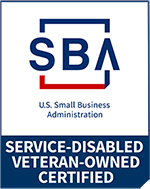Research Enterprise Optimization
Client:
Veterans Health Administration (VHA), Office of Research and Development (ORD)
Challenge:
VHA oversees a research budget totaling approximately $2.69 billion, of which $729 million is from Congressional appropriation for medical and prosthetic research and $1.96B is from other Department of Veterans Affairs (VA) and non-VA sources (e.g., National Institutes of Health, foundations). These funds support over 7,300 research projects and 3,600 principal investigators at over 100 research sites nationwide. These sites provide the full range of translational research ― starting with T1 (basic science to clinical application) progressing through T2 (clinical innovation to patient care) and achieving T3 (clinical evidence to consistent practice). Seeing as more than 60% of Principal Investigators are also clinicians, VHA’s research is intimately connected to Veterans’ clinical needs and the care system that serves them. Our team is working with ORD leaders and staff in the development and implementation of an integrated research enterprise architecture to support the seamless and effective implementation of the full range of translational research.
Approach:
The team provides ORD with healthcare research professionals that support a wide range of tasks associated with optimizing an integrated research enterprise. By possessing a deep understanding of ORD’s portfolio, our team can align the requisite talent needed to support time sensitive and evolving research activities. For example, PFS staff provided program and change management support for 108 Department of Veterans Affairs (VAMC) as they transition to the enterprise-wide research platform (IRBNet); provided organizational planning support for the establishment of the National Artificial Intelligence Institute (NAII); provided data science and analytics support (including COVID-19 Master Study List); and assisted ORD in establishing governance and standardization for the Central Biorepository.
Results:
Highlights include of our team’s support includes:
- Developed and is helping to implement the VA Innovation and Research Reviews System (VAIRRS) Strategic Communications Plan that to amplify tactical, educational, and promotional communications to VHA leaders and Field staff.
- Produced analytics support to gauge success, progress, and impact of individual programs ― including customized dashboards ― for stakeholders from VHA’s research community, VA leaders, Veterans, and the public.
- Established and optimized two governing bodies of the Central Biorepository to review and decide on specimen and data request proposals.
- Conducted an audit of information technology (IT) resources to serve as a foundation of a future central ORD IT Service Catalog, ensuring comprehensive and cost-effective oversight of critical assets.
- Assisted in the establishment of the National Artificial Intelligence Institute (NAII).


